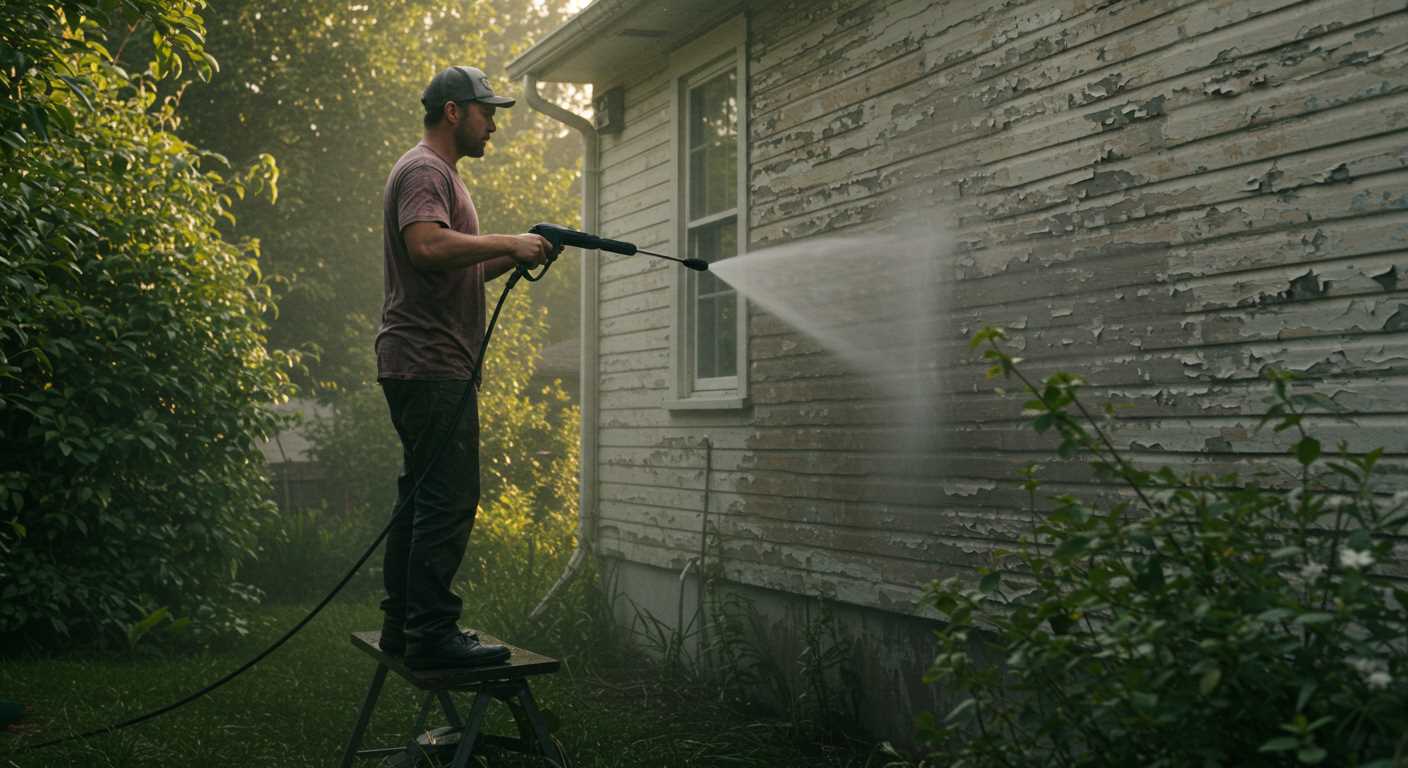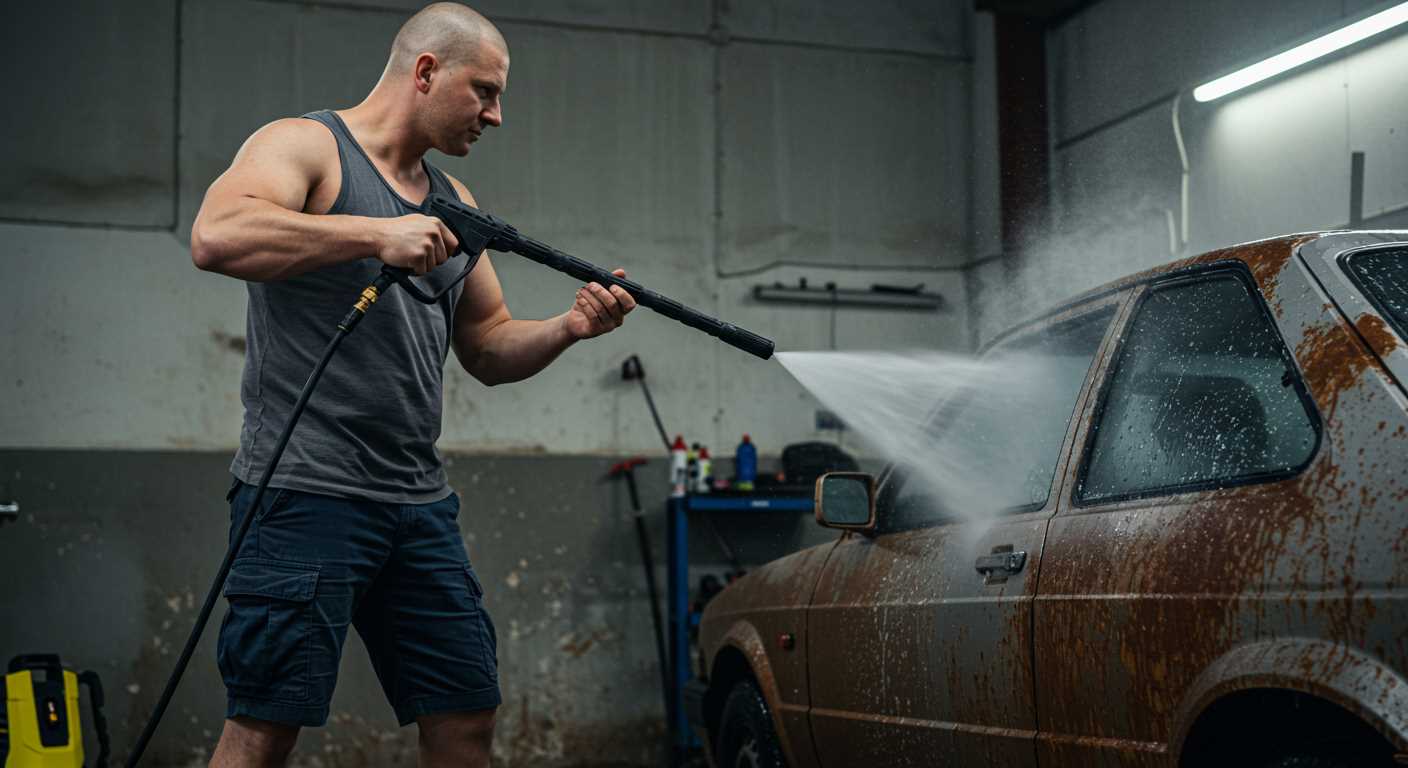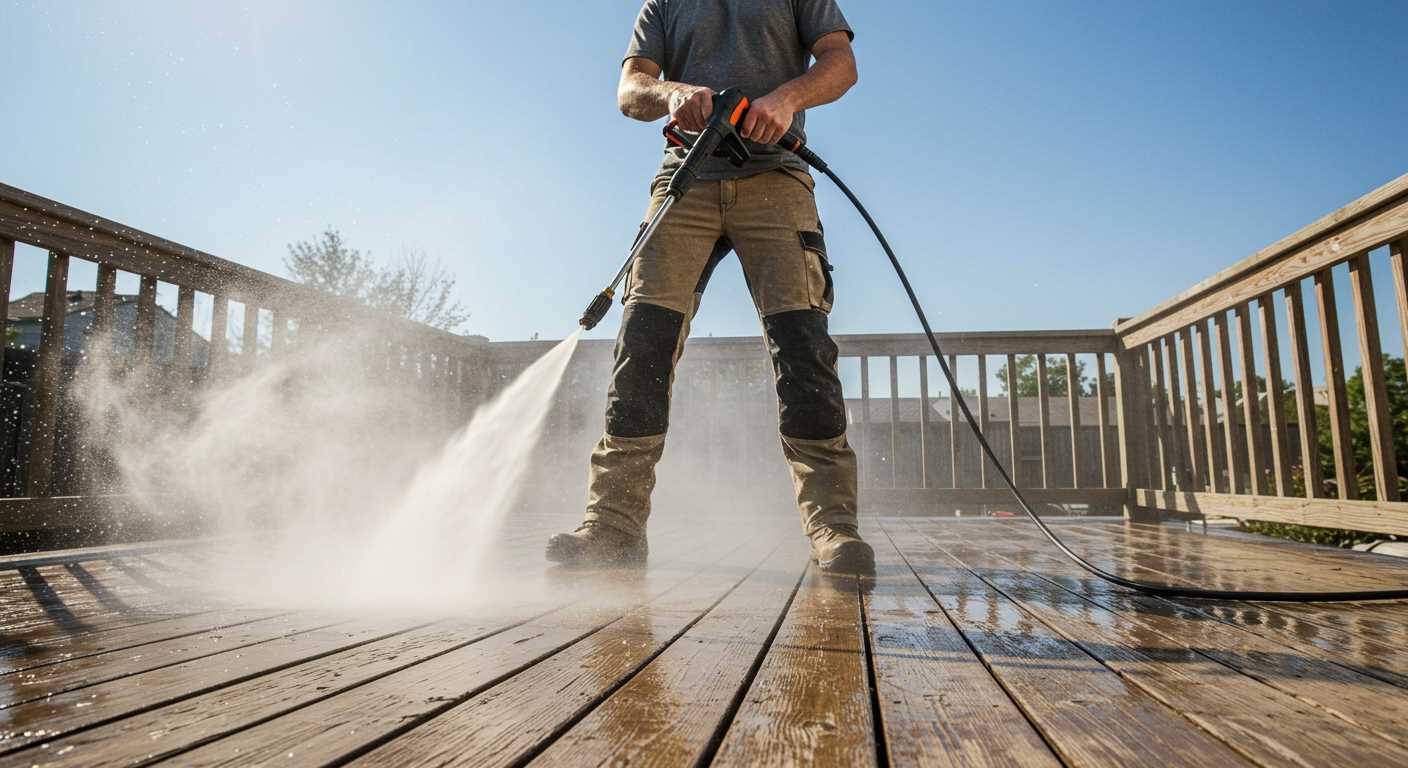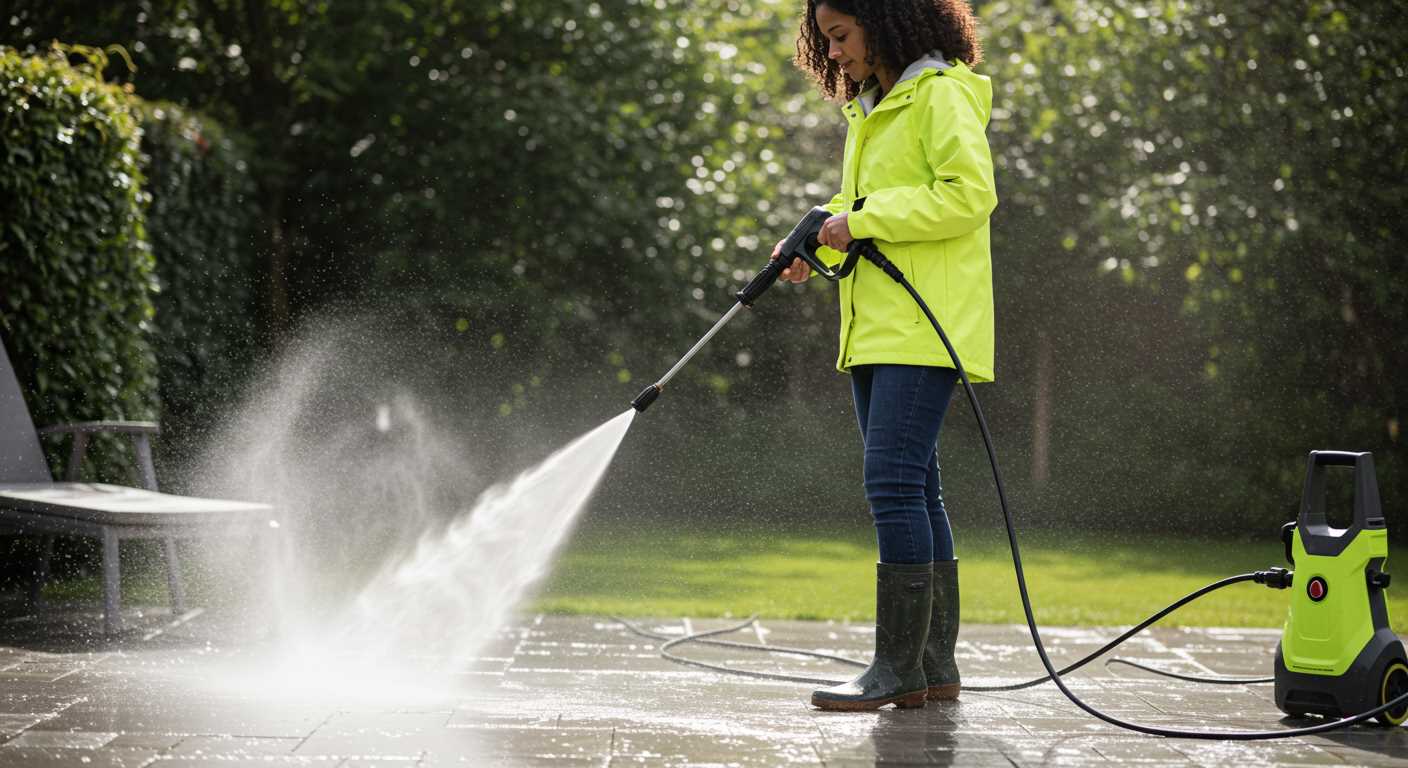



In my experience, when selecting a cleaning tool, evaluating the balance between water pressure and flow rate is paramount. High pressure alone can strip surfaces but may require ample water to maintain efficiency during use. For residential tasks like cleaning patios or driveways, a machine with around 2000 to 3000 units of pressure paired with 1.5 to 2.5 gallons of output per minute delivers an excellent combination.
For significant grime and grease removal, consider models with a higher output–going beyond the standard figures. This helps prevent surface damage while ensuring that the water effectively reaches deeper layers of dirt. If a machine has insufficient flow, it could lead to unsatisfactory results, regardless of the pressure it generates.
In my decade-long journey through various cleaning solutions, it became evident that choosing equipment tailored to specific tasks is essential. For instance, surfaces like wood or delicate materials benefit from a nuanced balance, while concrete surfaces may thrive under higher specifications. Hence, thoroughly assessing the specifications before making a decision is necessary to ensure optimal performance.
Is PSI or GPM More Critical for Your Cleaning Tasks?
Prioritize the flow rate of water when selecting a cleaning device, especially for larger surfaces or heavy-duty tasks. A higher flow rate ensures quicker rinsing and more efficient dirt removal.
Understanding Flow Rates
Flow rates determine how much water the machine can deliver per minute. This aspect is crucial in achieving effective cleaning, particularly when tackling stubborn stains or expansive areas. For instance:
- For general household cleaning, such as patios and cars, aim for a flow rate of at least 1.5 to 2.5 gallons per minute.
- For commercial use or deep cleaning, 3 to 4 gallons per minute is advisable to keep up with the demands of larger tasks.
Balancing Pressure and Flow
While the cleaning effect relies heavily on flow, pressure should not be overlooked. A balance between these factors influences how effectively the equipment will perform:
- A unit with low flow but high pressure may struggle to lift dirt from porous surfaces.
- Conversely, very high flow with inadequate pressure can lead to excessive water use without achieving desired results.
Evaluate your usual cleaning requirements and select machinery that provides an optimal combination, allowing you to tackle a variety of surfaces efficiently.
Understanding PSI: The Role of Pressure in Cleaning
Higher measurements can eliminate tough grime effectively, particularly on durable surfaces like concrete or metal. For instance, a reading of 3000 can strip away stubborn oil stains without damaging surrounding materials. However, be cautious; excessive force may harm delicate finishes or surfaces like wood or painted areas.
The effectiveness of heavy-duty clean-ups often hinges on this factor, as it propels water to dislodge dirt particles. When examining models, always consider the specific tasks you aim to tackle. For surface cleaning on patios or driveways, units with elevated figures will facilitate quicker results.
Are you focusing on vehicles or garden furniture? A gentler setting, around 1300 to 2000, suffices for gentle cleaning without risk of harm. Experience teaches me that understanding the nature of the cleaning job dictates which measurement suits best. Pair this force with a suitable nozzle, and your cleaning endeavors become significantly more productive.
Another insight involves distance. Maintaining an optimal distance from the surface being treated will allow for effective cleaning. Using this parameter correctly will diminish the chances of damage while still achieving optimal results.
In summary, focus on selecting a unit tailored to your needs. Understanding the dynamics behind water force will refine your choice and enhance the cleaning experience, ensuring both efficiency and safety in every task.
Exploring GPM: How Water Flow Impacts Performance
When assessing the water flow rate of a cleaning device, it becomes evident that the quantity of water delivered is a major factor influencing cleaning speed and efficiency. A device with a high flow rate enables quicker rinsing and removes debris more effectively compared to units with lower water output. This aspect is particularly beneficial when tackling extensive areas or stubborn grime.
Optimal Flow Rates for Various Tasks
For general cleaning tasks, I recommend shooting for a flow rate of at least 2.5 litres per minute for household use. This allows for sufficient coverage and ensures that surfaces are properly saturated, making it easier to remove dirt and stains. However, for larger projects such as washing vehicles or patios, a rate of 5 litres per minute or higher can significantly enhance the cleaning process by maximising water contact with the dirty surfaces.
Impact on Surface Interaction

A robust flow rate does not just affect speed; it equally enhances the interaction with detergents and cleaning agents. When more water is used, it helps in carrying the solution into crevices and onto surfaces, ensuring a more thorough clean. Therefore, knowing how water flow correlates with the formula used can streamline your efforts and boost the overall cleaning capability of your equipment.
Comparing PSI and GPM: Which Metric Matters More?
From my extensive experience in the cleaning equipment industry, I assert that understanding the balance between pressure and flow rate can significantly influence your cleaning outcomes. When selecting a unit, it is crucial to assess your specific cleaning needs based on the areas you intend to tackle.
Determining Use Cases
- If you’re handling tough stains on concrete or driveways, higher pressure levels would be beneficial for effective spot removal.
- For washing vehicles or delicate surfaces, opting for a model with a lower pressure but adequate flow rate ensures safety and thorough rinsing without damage.
Calculating Cleaning Power
The combination of the two metrics gives you a “cleaning power” figure, which is often calculated as pressure multiplied by flow rate. Taking this into account will help in selecting a machine that streamlines your cleaning tasks:
- For most residential tasks, look for cleaning power around 2,000 to 3,200 units – adequate for typical home use.
- Commercial applications might require higher values, especially if involved in frequent heavy-duty work.
In conclusion, while considering your next equipment investment, focus not solely on one metric but rather on how both contribute to your cleaning efficiency. Align the machine’s specifications with your specific requirements to maximise performance and satisfaction. The appropriate balance will ensure effective results tailored to your unique needs.
Selecting the Right Balance for Household Tasks

For typical domestic chores, I strongly advocate a machine with 2000-3000 psi and a flow rate of 1.5-2.5 gallons per minute. This range delivers adequate force combined with effective water delivery to tackle a variety of tasks, from cleaning driveways to washing vehicles.
Consider your specific needs: if you find yourself primarily dealing with delicate surfaces like siding or vehicles, prioritising a gentler approach with higher flow and lower pressure is wise. Conversely, for tougher jobs like stripping paint or cleaning concrete, a slightly higher pressure is preferable.
When assessing options, I recommend a balanced approach, ensuring the chosen unit does not compromise efficiency through excessive pressure or inadequate water flow. A harmonious alignment of both metrics leads to optimal cleaning performance without risking damage to surfaces.
Here’s a quick reference table to assist in making a decision:
| Task | Recommended Pressure (psi) | Recommended Flow Rate (gpm) |
|---|---|---|
| Washing Cars | 1200-1900 | 1.5-2.0 |
| Cleaning Patios | 2000-2500 | 2.0-2.5 |
| Stripping Paint | 2500-3000 | 2.5-3.0 |
| Washing Siding | 1500-2000 | 2.0-2.5 |
| Cleaning Decks | 2000-2500 | 2.0-2.5 |
Ultimately, striking the right balance aids in achieving satisfying results while prolonging the lifespan of your equipment and the surfaces being cleaned. Prioritising a versatile unit tailored to your tasks will lead to efficiency and satisfaction in your cleaning endeavors.
Identifying Applications: When to Prioritise PSI or GPM

For tackling tough stains on concrete, surfaces, and driveways, focus on high-pressure levels to blast away embedded dirt and grime. Units boasting elevated pressure deliver the force necessary for effective cleaning, ensuring challenging areas are effectively addressed. In contrast, softer materials such as wood decks or vehicles require a gentler touch. Here, opting for higher water flow rates mitigates the risk of damage while promoting thorough cleaning.
Targeting Specific Tasks
For car maintenance or detailing, prioritising water flow enhances rinsing capabilities without streaking or damage. The ample flow supports thorough coverage and efficient removal of soap and debris. Conversely, when repainting or preparing surfaces, utilise higher pressure to strip existing paint effectively. This balance allows for optimal preparation without unnecessary effort.
Balancing Performance and Efficiency

Consider regular household chores such as patio cleaning or siding maintenance. A mid-range model with a balanced approach provides satisfactory results. This versatility allows you to handle various tasks without the need for multiple devices, delivering efficiency in both cleaning and time management.
Common Misconceptions About Pressure Washer Specifications

Many users wrongly believe that a higher pressure rating automatically guarantees better cleaning results. In reality, cleaning effectiveness largely depends on the combination of pressure and water flow. A unit with elevated pressure but low water volume may struggle to rinse away dirt and grime efficiently. Consider the application: delicate surfaces require a lower pressure to prevent damage, while tougher stains might necessitate a stronger water blast.
Another common misunderstanding is that buying equipment with the maximum specifications available is essential. In truth, for standard home tasks, moderate ratings often suffice. Overpowering equipment can lead to unintentional harm to surfaces and may even lead to increased wear on the machine itself. It’s advisable to assess the cleaning requirements and choose appliances accordingly.
Misjudging Specifications Equally
Some consumers often overlook maintenance needs. Higher power machines typically require more regular upkeep to ensure longevity and ongoing performance. Users might forget that just because a device has impressive specifications, it doesn’t guarantee ease of use or less time spent on maintenance tasks. Regular cleaning of the nozzle and replacement of worn parts are essential for sustaining functionality regardless of the equipment’s capabilities.
Lastly, there’s a pervasive myth regarding the association of well-known brands with superior performance. Brand reputation has its place, but it’s essential to evaluate all specifications in conjunction with specific needs and practical reviews. User experiences can vary significantly, so researching customer feedback is crucial to making informed decisions.










